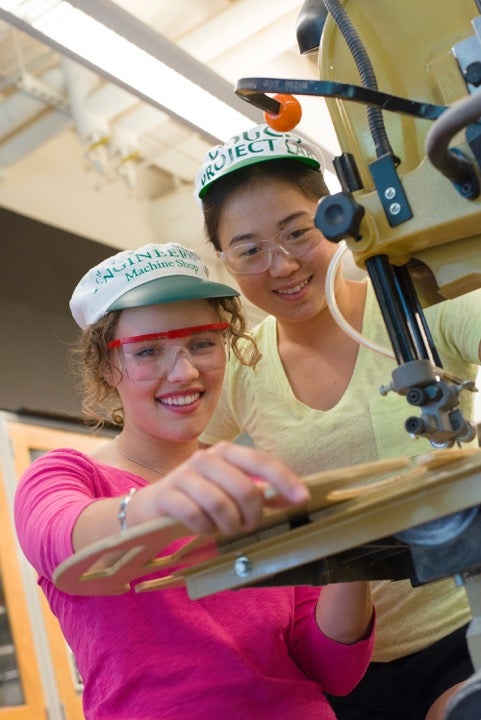This article was published in Scientific American’s former blog network and reflects the views of the author, not necessarily those of Scientific American
Consider this: In a nation that will need 1.7 million more engineering and computing professionals in less than a decade, U.S. universities and colleges this year awarded less than 20 percent of engineering bachelors degrees to women.
That equation won’t work.
Gender equality in engineering programs should be the standard, not the exception. Those of us responsible for producing those 1.7 million engineers and computer scientists need to see gender equality as more than just an interesting statistic. At Dartmouth’s Thayer School of Engineering, and at more and more of our peer schools, our approach to gender parity is a critical measurement we use to evaluate the success of our program.
On supporting science journalism
If you're enjoying this article, consider supporting our award-winning journalism by subscribing. By purchasing a subscription you are helping to ensure the future of impactful stories about the discoveries and ideas shaping our world today.
This June, Dartmouth’s engineering school made history. Women comprised more than 50 percent of the 117 graduates who received the AB (Bachelor of Arts) in engineering and are more than 50% of those continuing their studies to earn the ABET-accredited BE (Bachelor of Engineering). Among national research universities, Dartmouth and MIT have been the first to graduate majority-female engineering classes.
Even more important than celebrating this statistical milestone are the contributions our female engineers are making to the field. With the Class of 2016 as our most recent example, I watched with respect and pride as our female engineering students developed innovative solutions including:
A new kind of cerebral shunt for treating hydrocephalus.
An ergonomic serving tray to reduce injuries commonly experienced by restaurant servers
A device to filter and transport water that is ideal for sub-Saharan environments
But we didn’t get here with a well-worn roadmap. What we sought to create was a better engineering experience for all students, and along the way found that these strategies helped engage all aspiring engineers, bringing more women into our program.
All Dartmouth students receive the opportunity to take entry-level engineering design classes, learning alongside engineering majors
Here, they experience the creative, collaborative aspects of engineering without having to commit to the major. This aspect is key. We view STEM in general, and engineering in particular, as a force attracting more and more students—men and women alike—because of the excitement of tackling real-world problems in a highly collaborative environment.
Take a liberal arts student interested in sub-Saharan water issues, put her or him in a design class, and it’s almost impossible not to see the role engineering solutions can play in creating better lives.

Krystyna Miles, left, and Shinri Kamei, right, work on an ergonomic serving tray in the machine shop. Credit: John Sherman Thayer School of Engineering at Dartmouth
We learned early on that peer mentorship at many levels was critical in helping female engineers through the inevitable obstacles of breaking new ground
Mentors include not just faculty, administration and alumni, but also— importantly—teaching assistants. Our TAs are closest in age to our undergraduate students, and nearly half of them are women. Leading by example, our TA mentors show undergraduates how to solve problems using the tools of engineering.
By increasing the percentage of female TAs, we create a campus in which interest in engineering is a norm, not an exception, for women.
We started with a culture initiative, not an admissions initiative
Ten years ago, when women comprised just over 20 percent of our undergraduate class at Thayer, we sought to expose the greatest number of Dartmouth College students to the beauty of engineering. We wanted underclass men and women to experience the creativity of elegant design solutions and the energy of collaborating with students from diverse disciplines.
Building on an underlying collaborative culture and adding new courses designed to engage undecided students and non-majors worked. Only half of the women engineers from the class of 2016 started their Dartmouth education planning to pursue an engineering major. We gave the other 50% a chance to engage in engineering, and they, too, were hooked.
How can we expose more non-engineers to entry-level design classes and hands-on problem-solving projects?
How can we enable female students interested in science and engineering to find mentors who have walked the path?
And how do we shift the culture of our engineering programs to open the doors of our classrooms and labs to students in other parts of the university who share engineering’s passion for solving the world’s problems?
The world needs engineers. And the world needs more engineers who approach problems from different perspectives even more. We happen to believe a liberal arts curiosity and creative sensibility combined with engineering pragmatism and design tools can be a powerful force for the future of our country.
We can’t wait to see how our Class of 2016 changes the world.